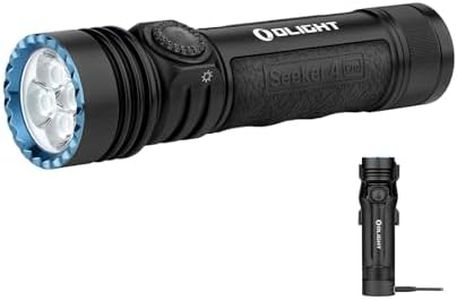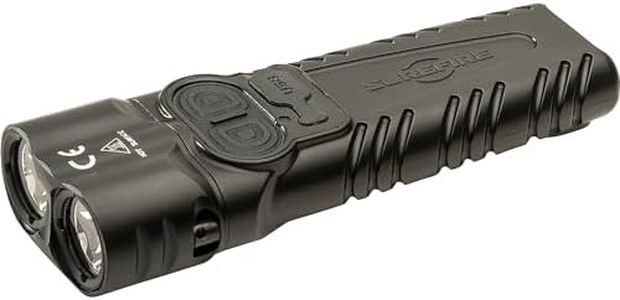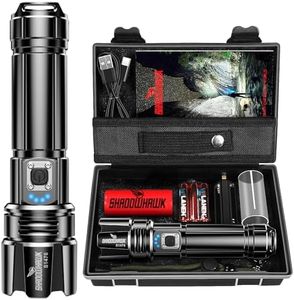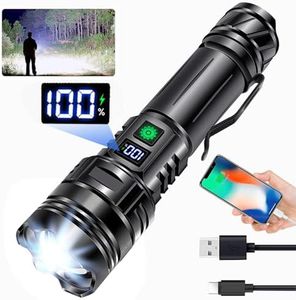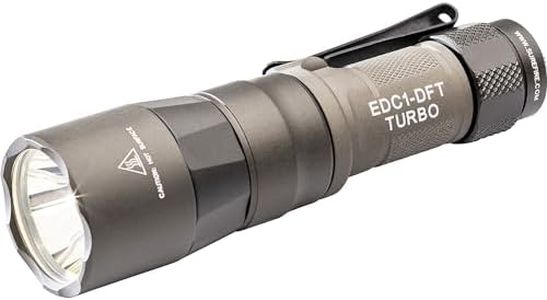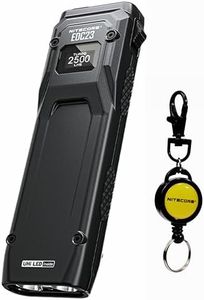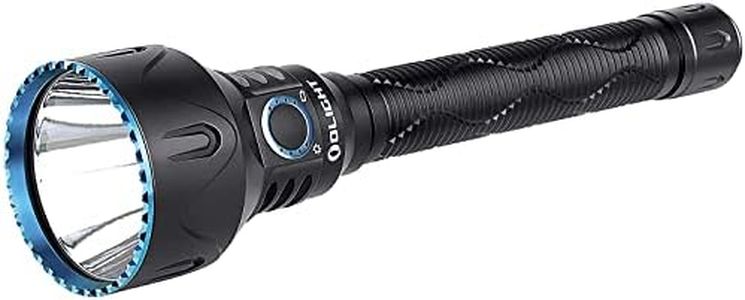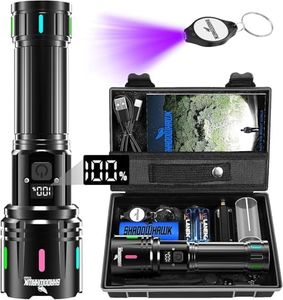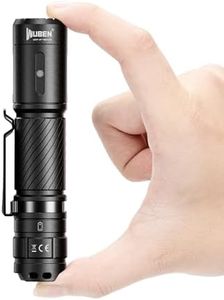We Use CookiesWe use cookies to enhance the security, performance,
functionality and for analytical and promotional activities. By continuing to browse this site you
are agreeing to our privacy policy
10 Best Tactical Flashlights
From leading brands and best sellers available on the web.Buying Guide for the Best Tactical Flashlights
When choosing a tactical flashlight, it's important to take a thoughtful approach rather than relying just on advertisements or the most popular option. Start by considering how you plan to use your flashlight—whether for outdoor adventures, emergencies, everyday carry, or professional situations. The best tactical flashlight will balance practicality, durability, and the right features for your needs. Understanding key specifications can make your search easier and help you avoid paying for features you don't actually require.Brightness (Lumens)Brightness, measured in lumens, tells you how much light the flashlight can produce. High lumen counts mean a brighter light, but this isn't always necessary for everyone. Flashlights around 100-300 lumens are suitable for close work or indoor use, while 400-1000 lumens provide excellent visibility outdoors or in larger spaces. If you need a flashlight for search and rescue or to light up very large areas, models above 1000 lumens may be ideal. Pick the brightness level that matches where and how far you need to see.
Beam DistanceBeam distance indicates how far the light beam can reach effectively. Shorter distances, under 50 meters, work well for indoor tasks or close-range work. Medium ranges, between 50-200 meters, are good for most outdoor uses. Long distances, above 200 meters, are best for search and rescue or spotting objects far away. Think about the typical environment you'll use the flashlight in to choose the beam distance that's right for you.
Battery Type and RuntimeThe battery type affects convenience, operating costs, and runtime. Common options include disposable batteries (like AA or CR123A) and rechargeable batteries (such as lithium-ion). Disposable batteries are easy to replace, while rechargeables can save money and reduce waste. Runtime indicates how long the flashlight will work before the batteries need changing or recharging; low settings can last for many hours, while high brightness can drain batteries faster. Choose based on how long you need the flashlight to run between charges and how easy it is for you to access replacement batteries.
Size and WeightFlashlight size and weight affect how comfortable it is to carry and use. Compact, lightweight models are great for everyday carry or situations where you need to keep your load minimal. Larger, heavier options often provide longer battery life or higher brightness but may be less convenient to carry all day. Consider where you'll store the flashlight and how portable you want it to be when selecting the size and weight.
Durability and Water ResistanceDurability is essential for tactical flashlights since they may be used in tough conditions. Rugged designs, often made from aluminum or reinforced plastics, can handle impacts and drops. Water resistance, rated by the IPX system, shows how well the flashlight withstands water—in general, IPX4 means splash resistance, while IPX7 or higher can handle submersion. Choose based on your typical environment, such as wet weather or rough terrain.
Modes and ControlsMany tactical flashlights offer multiple modes, such as high, medium, low brightness, and sometimes strobe or SOS for emergencies. More modes provide flexibility, but too many may make controls confusing. Some also have features like momentary-on switches for quick bursts of light. Consider whether you need special modes or if simple operation is more important for your use.
